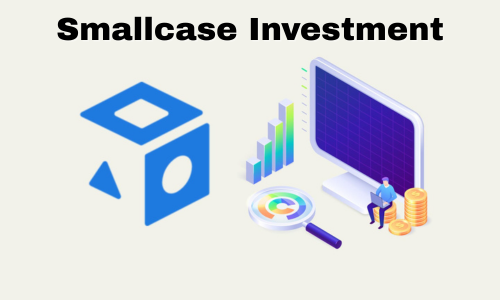In this article, we will discuss about...
Introduction
Hey there! If you’ve been following this investment series, you know we’re all about leveling up our financial game step by step. Now, we’re at Level Three, where we’ll explore Smallcase—a game-changing investment platform that has given me fantastic returns over the past few years.
Before we dive in, let’s clear up a common misconception: Smallcase is NOT the same as small-cap companies! Small-cap companies are stocks with smaller market capitalizations. Smallcase is an investment platform that curates theme-based stock portfolios.
If you’re serious about achieving financial freedom by 40, understanding platforms like Smallcase is a must. Let’s break it down!
Don’t let reading hold you back, Watch our video instead
Why You Need to Level Up Your Investment Strategy
Investing is a journey. Some people stick to fixed deposits (FDs) and slowly accumulate wealth. Others put all their money in mutual funds and forget about it—which, to be fair, can work.
But if you want to accelerate your financial growth, you need to explore better, smarter strategies.
As a Chartered Accountant (CA), I’ve seen how investment opportunities evolve as your portfolio grows. Risk and return go hand in hand, and as my savings increased, I looked beyond traditional options. That’s when I discovered Smallcase.

How is Smallcase Different from Mutual Funds?
Unlike mutual funds, which may hold 50-200 stocks, Smallcase portfolios usually contain just 10-15 carefully selected stocks. This makes them focused, high-conviction investment strategies.
But here’s the deal—I don’t recommend Smallcase for beginners.
First, build a strong foundation with at least ₹10 lakh in mutual funds. Once you’re comfortable, Smallcase can be your next step.
My Smallcase Investments & Returns
I’ve been investing in Smallcase for a few years now. Here are some of my top-performing portfolios:
-
Realty Tracker – Focuses on real estate companies. Return: 16%
-
Growth & Income – A mix of growth and dividend-yielding stocks. Return: 31.2% XIRR
-
Timeless Asset Allocation – Diversifies across asset classes. Return: 14.2%
-
Electric Mobility – Focuses on EV stocks.
-
Equity & Gold – Balances stock market and gold investments.
-
ARQ Prime (Angel One) – Algorithm-based trading. Return: 28% XIRR
-
CANSLIM – Follows the CANSLIM investment strategy.

Key Takeaway:
Don’t chase 100%+ gains on a single stock. What truly matters is your portfolio’s average return. If you can maintain a steady 15-16% CAGR over 10 years, you’ll build significant wealth.
Understanding XIRR: The Best Way to Measure Returns
XIRR (Extended Internal Rate of Return) is the best way to track investments where money is added at different times.
Example:
-
If you invest ₹10 lakh at once, and it grows to ₹19 lakh in a year, that’s a 90% absolute return.
-
If you invest the same ₹10 lakh gradually, your actual return will be lower because not all of your money was invested the whole time.
Since Smallcase allows SIP-based investments, using XIRR helps you accurately measure real returns.
Types of Smallcase Portfolios
Smallcase offers two types of portfolios:
-
Free Portfolios – No subscription fees. Great for beginners.
-
Paid Portfolios – Requires a ₹1,000 per month subscription (₹12,000 annually).
For small investors, free portfolios are the best starting point. If your portfolio is under ₹12 lakh, paying ₹12,000 annually isn’t worth it.
How to Pick the Best Smallcase Portfolio
Here’s my simple checklist to evaluate Smallcase portfolios:
-
Use Filters – Sort by High, Medium, or Low risk.
-
Check the 5-Year CAGR – Ignore 3-year CAGR, as it may be skewed by a bull run.
-
Use the Watchlist Feature – Monitor portfolios for 1-2 months before investing.
SIP vs. Lump Sum: Which One is Better?
You can invest in Smallcase via Manual SIP or Automated SIP.
-
Manual SIP – You manually invest a flexible amount each month.
-
Automated SIP – A fixed amount is automatically deducted from your bank.
I recommend Manual SIP for most investors—it keeps you flexible.

Creating Your Own Smallcase Portfolio
Smallcase also allows you to create custom portfolios. Before investing real money, you can:
-
Select stocks & build a portfolio.
-
Track performance over time.
-
Decide whether to invest.
Example:
I created a Smallcase in Feb 2024, and it’s currently at -0.86% returns—proving that backtesting is crucial before committing real money.
Important: You Need a Linked Demat Account
Smallcase is NOT a standalone investment platform. You need a Demat account with brokers like Zerodha, Angel One, or others to invest.
-
Your stocks are held in your Demat account, NOT with Smallcase.
-
Even if Smallcase shuts down, your investments remain safe.
Conclusion
Smallcase is an excellent platform for investors who want to go beyond mutual funds and explore high-conviction portfolios.
Key Takeaways:
-
Start with free portfolios before paying for premium ones.
-
Invest for at least 3-5 years for the best returns.
-
Use XIRR to track real investment performance.
-
Opt for Manual SIPs unless you have a stable income.
-
Ensure you have a linked Demat account.
